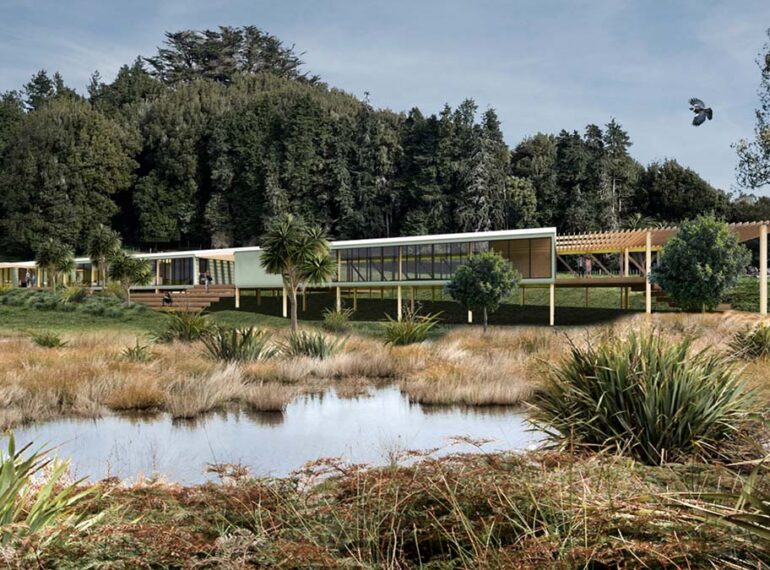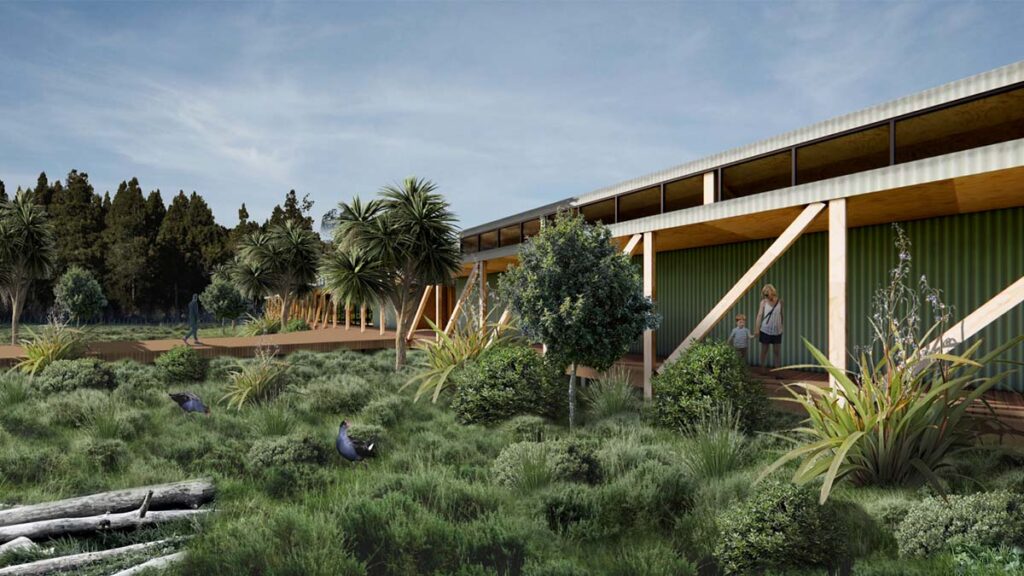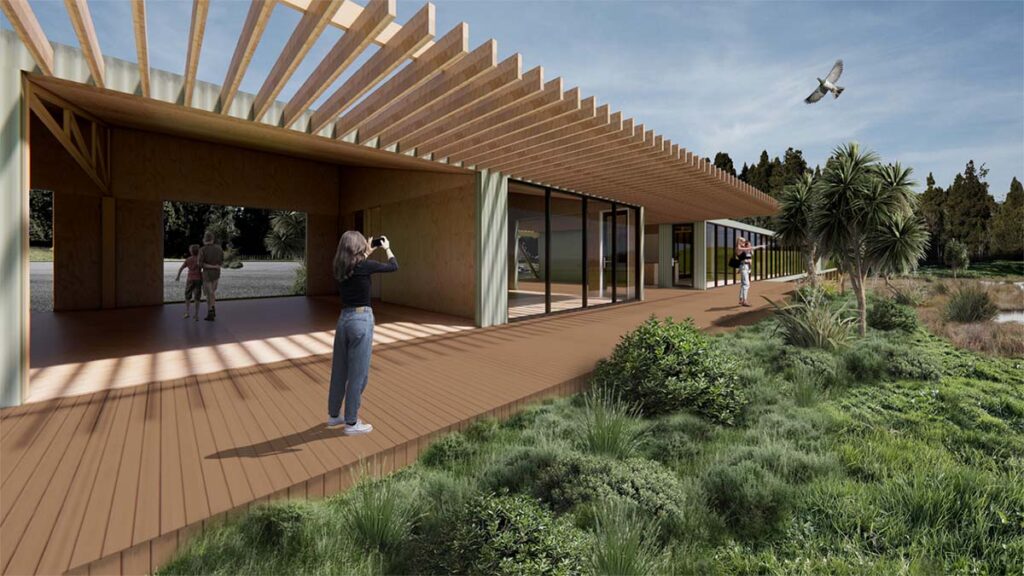Inglewood is set to become the epicentre of Taranaki’s conservation effort thanks to construction of a Taranaki Environment Centre in the town.
The $4 million centre, a partnership between East Taranaki Environment Collective, Pukerangiora hapū of Te Atiawa iwi, and New Plymouth District Council, will be built as a centrally located shared space for organisations working in the conservation and pest management sectors, and as a place of learning.
The partnership announced today that the centre will be named te noninga o Hākuturi – the place where the Hākuturii, the guardians of the forest, reside.
In Maori mythology the Hākuturi have a collective responsibility to protect, regenerate and advocate for the natural environment. The Taranaki Environment Centre will mirror this responsibility, as a place where organisations involved in environmental stewardship and the preservation and enhancement of biodiversity can work together and collaborate.
The Hākuturi partnership and other conservation groups have said they value the position of Inglewood, midway between Te Papakura o Taranaki/Egmont National Park and thousands of hectares of forest in rugged country to the east, and the town is easily accessible from other main centres in the region.
Planning for the centre, which will be sited on council-owned land adjoining Joe Gibbs Reserve alongside the Kurapete Stream, is well advanced. For several months now New Plymouth architect Brady Gibbons of Gibbons Architects has been creating a building concept that closely follows Pukerangiora’s cultural narrative surrounding te noninga o Hākuturi.
In the Maori korero, Rata felled a tree to build a waka, but he failed to offer prayers to Tane the lord of the forest, so that night the Hākuturi repaired the tree and stood it upright again. Rata expressed remorse and pleaded forgiveness, and in response the Hākuturi felled a tree themselves and carved a waka for him.
Brady Gibbons’ building design suggests a long and lean facility that will lie lightly on the landscape, indicative of the trunk of the tree that Rata attempted to fell to make his waka. The centre will comprise a simple but robust series of pole shed type structures linked with covered walkways. This will allow development of te noninga o Hākuturi to be staged if necessary, as costs and funding permit.
- View of the western entry
- View of the eastern wetland outlook
In conjunction with the building project, the NPDC will restore part of the property into wetland and native bush area featuring a wide range of native plant species. Inglewood’s public walkway network will be expanded so it leads walkers through it. The centre will be positioned on a rise overlooking all of this.
“We’re really proud to be regenerating this reserve into a habitat for native birds and insects, at the same time as ETEC and Pukerangiora are developing a centre to enhance biodiversity across the region,” says NPDC manager strategic planning Renee Davies.
ETEC chair Rob Maetzig says that as part of research into the need for a Taranaki Environment Centre, the region’s conservation groups were surveyed to establish their support or otherwise. This research confirmed a lot of interest from respondents to use these facilities, either as a permanent base, or for workshop and/or boardroom facilities as required.
“te noninga o Hākuturi will be a place where the conservation community can come together to share overheads, resources, expertise and knowledge,” he says.
“A place where volunteers can come together to contribute and share their skills. A place where the Taranaki community and visitors can learn about the important mahi happening within our region to protect and restore the biodiversity for our future generations.
“We are convinced this facility will benefit our whole community and enhance the visitor experience through cultural narratives.”
For Media:
Rob Maetzig 027 467 7918
Email NPDC’s media desk: media.enquiries@npdc.govt.nz or phone 06 759 6060



